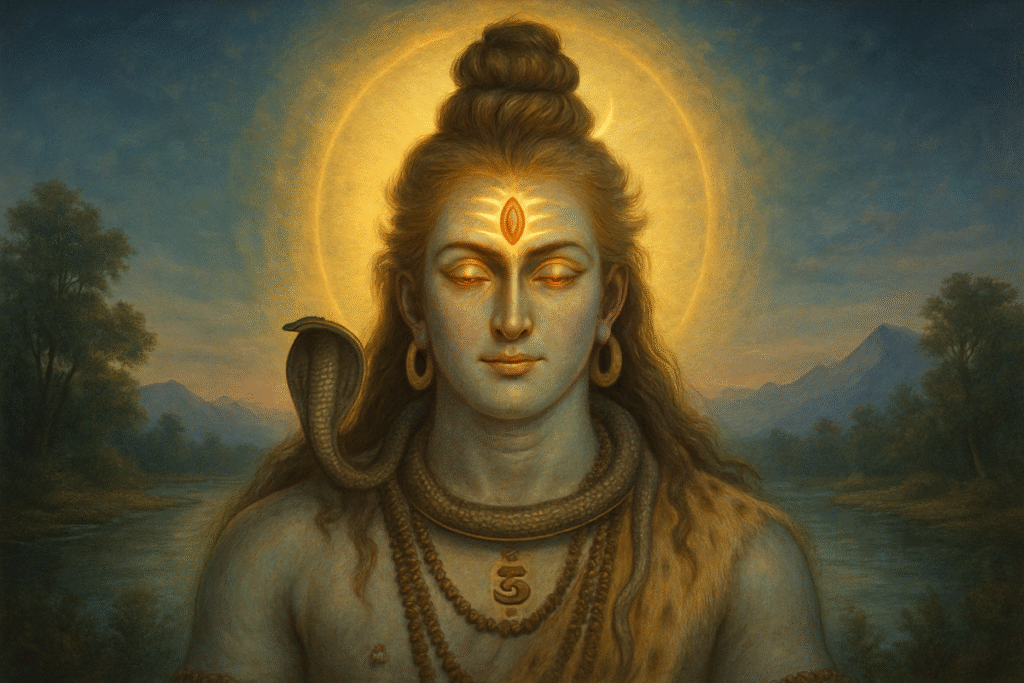Bel (Bilva) Patra, the sacred trifoliate leaf of the Bel (Bilva) tree, holds a special place in the worship of Lord Shiva. Devotees offer it with deep faith, believing it pleases the Lord and brings numerous spiritual and material blessings. Let us explore the essence, the mythology, the spiritual meaning, and the blessings associated with this beautiful ritual, drawing references from revered Hindu scriptures published by Geeta Press Gorakhpur and the Shiva Purana.

The Divine Significance of Bel Patra
Bel Patra stands out for its unique spiritual symbolism. Each leaf carries the energies of the three Gunas—Sattva, Rajas, Tamas—as well as the mighty Trinetra (three eyes) of Shiva. Therefore, when you offer Bel Patra, you present the essence of the Self—mind, body, and speech—to Mahadev. This trinities’ unity transforms your simple offering into an act of surrender and wholeness.
- The trifoliate form stands for Trinetra, the cosmic vision of the Lord.
- It embodies the sound “AUM”—the primordial vibration.
- Offering a Bel Patra is seen as surrendering the mind (thoughts), body (actions), and speech (words) to Lord Shiva.
Mythological Origin – Shiva’s Deep Affection
The beloved tale of Samudra Manthan (churning of the ocean) is central to the ritual. When the deadly poison “Halahal” emerged during the churning, Lord Shiva drank it to save the universe, bearing enormous pain. To soothe His burning throat, the celestial beings and devotees offered Bel Patra, which brought relief to the Lord.
Bel Patra’s connection further deepens through another legend: Goddess Parvati’s sweat, while meditating, fell upon the Mandarachal mountain, from which the sacred Bel tree sprouted. Hence, it is said that offerings of Bel Patra also honor the goddess and symbolize the worship of Shiva and Parvati together.
Spiritual Blessings and Benefits
Offering Bel Patra is believed to:
- Purify the devotee’s soul, absolving sins and karmic bondages.
- Bestow health, peace, and prosperity upon the worshipper.
- Grant spiritual elevation and guide one toward Moksha (liberation).
- Fulfill heartfelt wishes when offered with sincere devotion.
Some devotees write the 1008 names of Shiva on individual leaves, believing this brings the highest blessings of health and spiritual progress.
When Did This Ritual Start?
The ritual of offering Bel Patra dates back to Vedic times. Scriptural references from the Shiva Purana, Skanda Purana, and other Sanatana texts highlight Bel Patra as one of the six essential articles for Shiva Puja. Over centuries, this custom has remained unchanged, emphasizing the purity and simplicity Shiva expects from his children.
Bel Patra is also mentioned in “Shiva Mahapuran” and other works available from Geeta Press, Gorakhpur. These works explain the importance of offering leaves that are whole, free from holes, and freshly plucked for Puja.
How to Offer Bel Patra – Devotional Process
To perform Shiva Puja, devotees typically:
- Wake up before sunrise, bathe, and gather fresh Bel Patra.
- Offer the leaves (preferably with their stalks intact and upward) to the Shiva Lingam.
- Chant “Om Namah Shivaya” with devotion while making the offering.
- Offer water or milk after Bel Patra, honoring the powerful tradition of Abhishekam.
What Happens When You Offer Bel Patra?
Your devotion unlocks extraordinary results. Shiva, the ever-compassionate Bholenath, accepts your love and transforms it into tangible and intangible blessings:
- Protection from misfortune and fear.
- Harmony in family and relationships.
- Progress in life’s material and spiritual quests.
- Ultimately, divine grace that removes all suffering and binds you closer to self-realization.
Therefore, countless saints, householders, and seekers continue this age-old practice to keep their connection with Mahadev alive and thriving.
The Science and Meaning of Pouring Milk

Pouring milk on Lord Shiva, known as “Abhishekam,” is one of the oldest and most revered Vedic rituals. Milk abhishekam holds irresistible appeal for devotees. When you pour milk on the Lingam, you cool and nourish the divine. Our scriptures describe milk as a symbol of purity, love, and the fertility of creation. Likewise, as you pour, you relieve Shiva’s cosmic pain and express gratitude for His boundless compassion.
Devotees often add water, honey, curd, or fruit juice. Each substance reflects a deeper spiritual attribute: water cleanses, honey sweetens life, curd nourishes, and fruit juice energizes. Together, they create a complete, auspicious offering.
- Milk represents nourishment and is associated with blessings, peace, and compassion.
- The act of Abhishekam also signifies surrender and the desire to cleanse oneself of negativity.
- Other ingredients used include water, honey, ghee, curd, and fruit juices; all have specific symbolic meanings of purity, longevity, sweetness, and overall well-being.
The ritual is deeply connected to the cycles of nature, as water and milk harmonize with the vibrations of the Shiva Lingam and the worshipper’s heart.
Other Offerings Dear to Lord Shiva
Along with Bel Patra, several other offerings are cherished by Lord Shiva:
- Datura (Thorn Apple): Datura flowers symbolizing vigilance and spiritual alertness.
- Aak (Madar) flowers: Symbolize surrender and purity.
- White Lotus: Denotes purity and spiritual awakening.
- Bhasma (Holy Ash): Represents the transient nature of life and detachment.
- Rudraksha beads: Believed to have emerged from Shiva’s tears, symbolizing his compassion.
- Fruits like coconut and ber (jujube): Represent nourishment and simplicity.
According to Bhagavad Gita (shlokas often cited by Geeta Press), any offering—be it a leaf, flower, fruit, or even water—when given with faith and love, is accepted by the Lord.

The Subtle Power of Devotion – Bhakti and Blessings
Every act of offering expresses genuine bhakti (devotion). Lord Shiva, addressed lovingly as “Bholenath,” is easily pleased by simple things given with a true heart. He blesses his devotees with inner strength, wellness, family happiness, freedom from all fears, and ultimately spiritual liberation.
Conclusion
Whenever you offer Bel Patra with humble faith, you step onto the path of liberation. The legends, rituals, and blessings associated with this tradition breathe through the pages of Sanatan scriptures and Geeta Press wisdom. That is why Lord Shiva easily accepts a simple Bel Patra, a token of your purest love.
Chant His name, pour your heart into each offering, and watch your life bloom in every direction. With each ritual, you unlock the boundless mystery and compassion of Mahadev Himself.
हर हर महादेव!
Please read more on Spirtiual Blogs Visit here: Spirituality – TechNewsSpirit
Har Har Mahadev
Har Har Mahadev 🙂